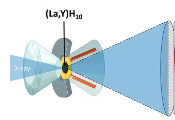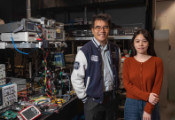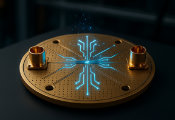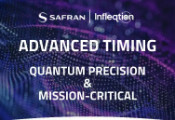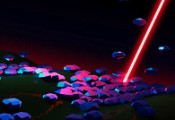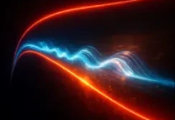The Rare-Earth Metal Erbium Could Play a Key Role in Future Quantum Networks
November 11, 2024 -- Transmitting information securely and efficiently is the aim of future quantum networks, and qubits — storing quantum information similarly to classical bits — are key to this vision. Researchers globally are investigating the components necessary for building such networks. A team from the Max Planck Institute of Quantum Optics and the Technical University of Munich, led by Andreas Reiserer, has focused on erbium— a rare earth element that emits light in a spectrum region particularly suited to fibre-optic transmission. The team succeeded in spectrally resolving and controlling up to 360 erbium ions in a thin crystal membrane, more than three times as many as before. Their findings were published in Advanced Optical Materials.
Several factors suggest that erbium could play a key role in future quantum networks. The rare-earth metal emits light at 1.5 µm, an electromagnetic wavelength ideal for data transmission via optical fibres. This could enable long-distance quantum information transfer by leveraging existing fibre-optic infrastructure. Moreover, erbium ions exhibit optical properties that that are largely insensitive to environmental noise.
As early as 2022, the research team achieved a breakthrough in an experiment with erbium atoms. Integrated into a thin crystalline plate and placed between two mirrors — an arrangement known as an optical resonator — the erbium atoms exhibited strong interactions with light. The researchers were able to spectrally resolve and control up to 100 erbium atoms, or "qubits," within the resonator. All of this took place at extremely low temperatures: a cryostat cools the setup to -271 degrees Celsius, thereby reducing thermal vibrations in the crystal.
A co-doped crystal
The scientists built significantly on these results by pre-doping the macroscopic crystal — that is, deliberately manipulating its properties. To do this, they added europium atoms to the yttrium orthosilicate crystal, intentionally introducing inhomogeneities, or "impurities," into the material.
What initially sounds counterintuitive is a calculated strategy to make optimal use of the technique of spectral multiplexing. This method allows a large number of photons to be emitted simultaneously and sent through optical fibres. This significantly increases the likelihood that at least one photon—and the information it carries—will reach its destination. However, the method only works if the emitters do not overlap in the spectrum. Overlapping can occur quickly if the number or density of erbium ions is too high, making spectral resolution no longer feasible.
To create as many—yet not too many—emitters as possible, the research team deliberately contaminated the crystal through the intentionally introduced defects. As a consequence, the frequency of the erbium ions shifts randomly due to the irregularities in the crystal. The emitters can then be controlled via their corresponding frequency.
Using this co-doped crystal, the MPQ and TUM scientists succeeded in individually "addressing" a total of 360 ions or qubits—more than three times as many as before. “To our knowledge, our Fabry-Perot resonator and the crystal membrane it contains is unique in its construction, as it is technically very challenging to produce a thin and simultaneously nearly atomically flat crystal membrane. Minimal roughness is crucial to avoid losses within the resonator,” explains PhD student and lead author Alexander Ulanowski. The optical resonator has another practical side effect: it shortens the optical lifetime, allowing for increased transmission rates. The team achieved a speedup factor of 100 with their optical resonator.
Reducing spectral diffusion
Whether and how erbium will play a role in the future quantum internet remains to be seen, as the promising candidate requires further investigation. One challenge that still needs to be addressed is the spectral diffusion of the emitters, which is the random variation in the emission frequency: “Switching to a different crystal that contains fewer or no nuclear spins could help here. This would improve the magnetic noise at the site of the erbium ions and reduce spectral diffusion,” explains Alexander Ulanowski. The team also plans to continue studying the doping element europium, which has long coherence times and may prove suitable for quantum memories.


